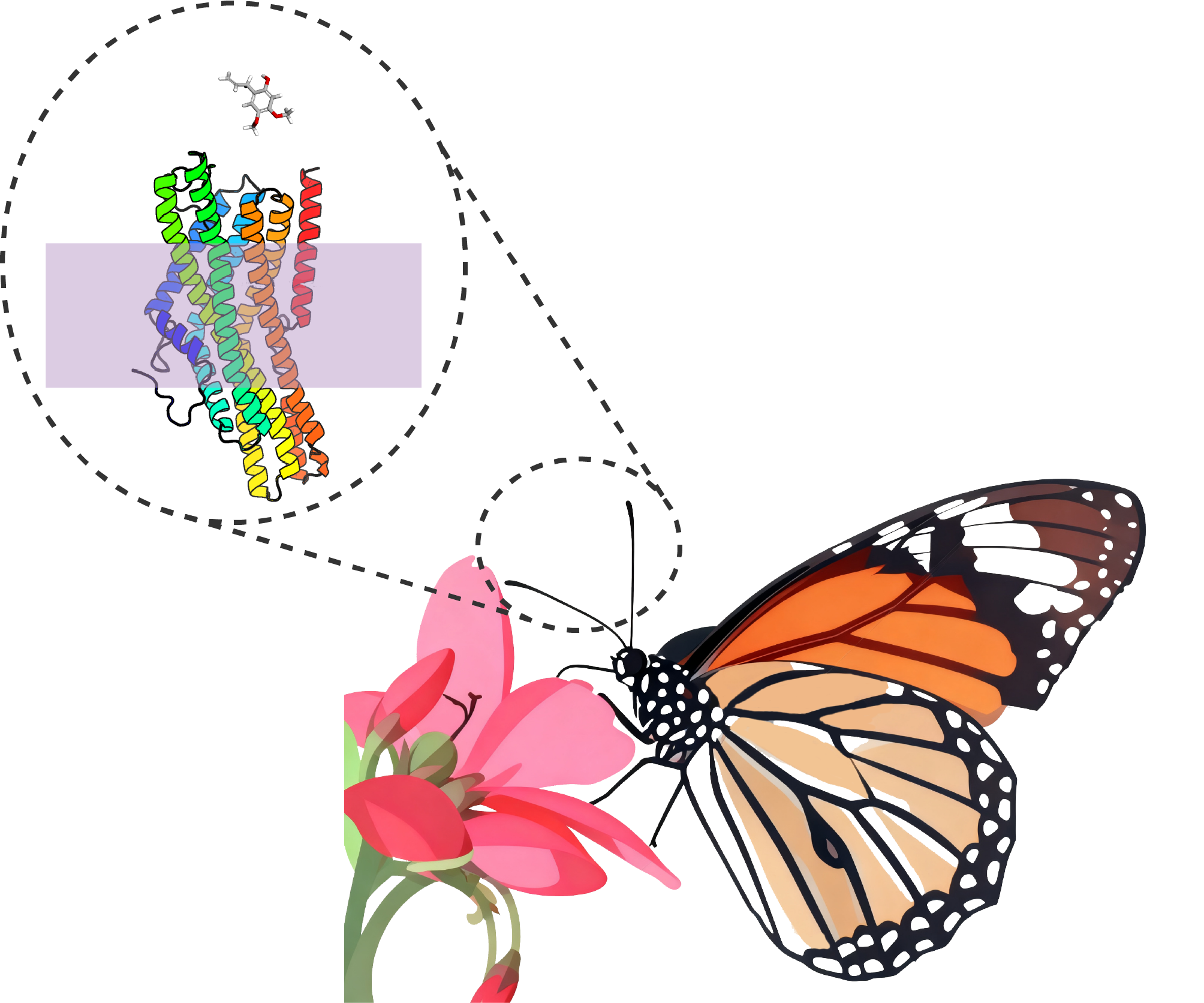iORbase 2.0:
Comprehensive Analysis Platform for Insect Olfactory Receptors
Focused on multi-dimensional analysis of insect olfactory receptors (iORs), providing a complete solution from gene annotation to molecular docking, facilitating research in insect chemical ecology and applications in pest control.

Insect odorant receptor
Olfactory receptors play a crucial role in insects' ability to detect and respond to chemical signals in their environment. These receptors are essential for various behaviors including foraging, mating, and avoiding predators.
Comprehensive analysis process for iOR
Sequence, Structures, and Functions
Sequence
iOR genes possess multiple exons, and a large number of pseudogenes are produced in insect genomes because of the rapid evolution of the iOR protein family (Robertson, 2019; Legan et al., 2021). In iORbase v1.0 (Lee et al., 2023), we proposed a method for screening gene annotation results using structural integrity.
Structure
Functional iORs can be distinguished from pseudogenes based on the 7 transmembrane segments and anchor domains. Moreover, the release of protein structure predictive methods like alphafold (Abramson et al., 2024) has enabled the prediction of 3D structures for iORs, which aids in understanding their functional roles.
Function
The interaction relationship between iOR and different odor molecules is called the function of iOR, and the decoding process of iOR function is called deorphanization. The deorphanization of a growing number of iORs is still challenging given the difficulties associated with conducting insect physiological and biochemical experiments.
Website News
iORbase v2.0 Released
We are excited to announce the release of iORbase 2.0 with enhanced features and expanded database.
Due to technical reasons, iorbasev1.0 is temporarily unavailable and will be relaunched later (most of the functions of v1.0 have been covered by v2.0).
Top Downloaded Papers
iORbase paper appears in Top Downloaded Papers of Insect Science in 2023: https://onlinelibrary.wiley.com/doi/toc/10.1111/(ISSN)1744-7917.most-accessed-2023
Publish iORbase v1.0
iORbase paper was published online in Insect Science (DOI: 10.1111/1744-7917.13162).
iORbase v1.0 Released
iORbase (v1.0) was online for internet test and optimization.